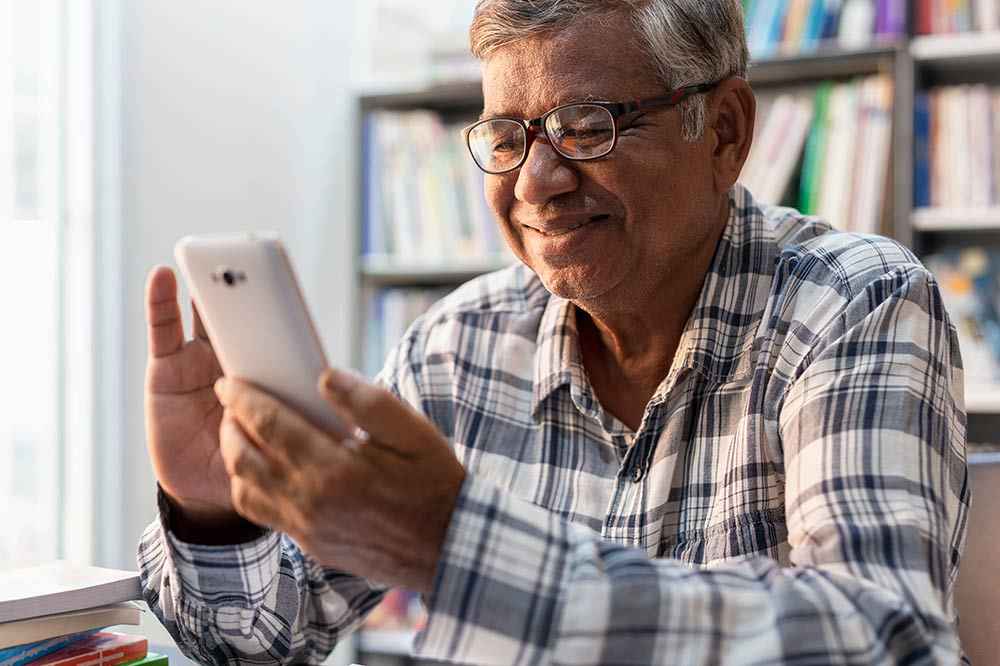It wasn’t too long ago that medical providers held all the power in care relationships. A patient would be scheduled for a time that worked best for the facility, talked to in complex jargon that they didn’t understand, and given a treatment plan without even fully comprehending their diagnosis.
But that’s rapidly changing.
Today’s patients are demanding a new kind of healthcare in which they’re a central part of the decision-making process — and providers are quickly responding.
I’ve seen clinicians and leaders across the care continuum working hard to deliver personalized treatment and empower patients with tools that support their participation in care. The key to their success? Education.
Educating patients in ways they prefer enables providers to put those patients at the center of care, helping them understand each step of their healthcare journey. As it turns out, in the modern healthcare landscape, patient education drives patient empowerment.
What Does it Mean to Empower Patients?
At its core, patient empowerment subverts the traditional healthcare model in which patients simply did as they were told by their providers. Patients feel empowered when they’re more accurately informed about their care, they’re able to ask better questions, and they’re more prepared for what’s to come.
In this context, the patient is at the center — rather than the sidelines — of a collaborative team of physicians, nurses, and staff who balance the patient’s thoughts with evidence-based practices to deliver strong results.
And education is the backbone of this empowerment: When patients understand the care they’re offered, they’re able to engage with it more effectively. And when organizations improve patient engagement it leads to incredible benefits, including:
- Better care delivery. Empowered patients receive the full map of their diagnosis and treatment plan in language they can comprehend. They’re immersed in the plan and are better equipped to participate in decision-making. When they’re also provided with self-care tools, patients take more command of their care, freeing up nurses and administrative staff to do more critical work at their facilities, which benefits other patients as well.
- Better adherence to treatment plans. One study found that educating patients on their diagnoses with accessible materials boosted treatment plan compliance rates from 64% to 86%. And 63% of patients who received counseling on their plans stayed compliant, compared to 39% without that service.
- Better outcomes. Time and again, health literacy has been shown to improve not only the care experience but also outcomes. A study focused on health literacy and heart failure patients found that educating patients reduced rates of hospitalization and death.
Centering the Patient at Every Step
Education is only one half of the patient empowerment process, however. Using evidence-based practices in the provision of services and in efforts to improve patient engagement is also key to patient-centric care.
For providers to truly center the patient, they need to ensure they’re combining education with evidence-based practices at every stage of the care continuum. Here are some critical ways to do so.
Put Power Into Patients’ Hands
Most patients want more control over their healthcare journey, but they often lack the resources and tools they need to take it. That’s why many organizations are starting to build those tools for them. Apps, patient portals, and other technologies can enable patients to schedule visits on their own terms, learn more about their treatment plans, and receive care in the ways they prefer, be it via telehealth or an in-person visit.
These types of resources are especially important to the start of a healthcare journey, as they enable patients to better understand and prepare for the next steps in their care experience.
To educate patients on the importance of cancer screenings and preventive testing, for example, one healthcare organization launched Online Personal Action Plans via patients’ web portals. The plans offered critical care information to more than 830,000 patients and resulted in a significant boost in care gap closure rates.
Diversify and Curate Your Educational Channels
As any good teacher knows, it’s important to shift lessons to meet different styles of learning. The same goes for healthcare: Adding a single journal article on chronic conditions to a patient’s web portal might not help them truly understand their diagnosis. But providing an explainer video, a podcast episode, an article, and a quiz might do the trick.
Different formats engage patients in different ways. Studies have shown that while readers retain an average of about 10% of the information they read in text, they retain a staggering 95% of what they see in videos. And when it comes to scheduling follow-up care, text messaging has been found to be just as effective as phone calls from nurses.
Diversifying the channels and formats through which patients receive their education helps them engage with materials in the ways they prefer, while helping providers learn how to explain complex topics in different ways. Curating the information within these channels can likewise ensure that patients receive accurate and physician-reviewed details.
Meet Patients Where They’re At
Tools like apps and web portals are crucial to modern healthcare, but not every patient is equipped to use them. Patients who live in rural areas or far from healthcare facilities might not have consistent access to a web portal, and those lacking transportation might not have the means to attend in-person visits.
That’s why it’s critical for healthcare organizations to use patient data to understand their patients’ needs and tailor their educational delivery methods to them. One organization, for example, created a digital screening reminder with an “order” button not unlike an ecommerce checkout page. Patients were able to order colorectal cancer screening tests directly from their portal, which increased screening completion rates from 63% to 87%.
Empowering Patients With Custom Solutions
At Elxo, we’re in the business of creating the tools that foster patient empowerment at every stage of care. To improve success rates for bariatric surgery candidates in one organization, for example, we developed a comprehensive app with tons of self-service features. Patients can use the app to:
- Schedule their own appointments without waiting on lengthy manual processes
- Engage with a two-hourlong seminar and five-chapter, physician-led video content to learn more about bariatrics
- Take quizzes to test their knowledge and help facilitate better discussions with their providers
The power and effectiveness of technologies like this comes from their customization and flexibility. We intentionally build our tools to be as simple as possible so that patients can start an educational video in just one click. The no-code or low-code nature of these tools also allows healthcare teams to quickly adjust the apps to their shifting needs.
We believe that technology is critical to providing quality, patient-centric care, but it’s the humans that are doing the work. When you're ready to implement tools that can assist you in empowering and engaging patients through accessible education, check out Elxo’s suite of software solutions.






